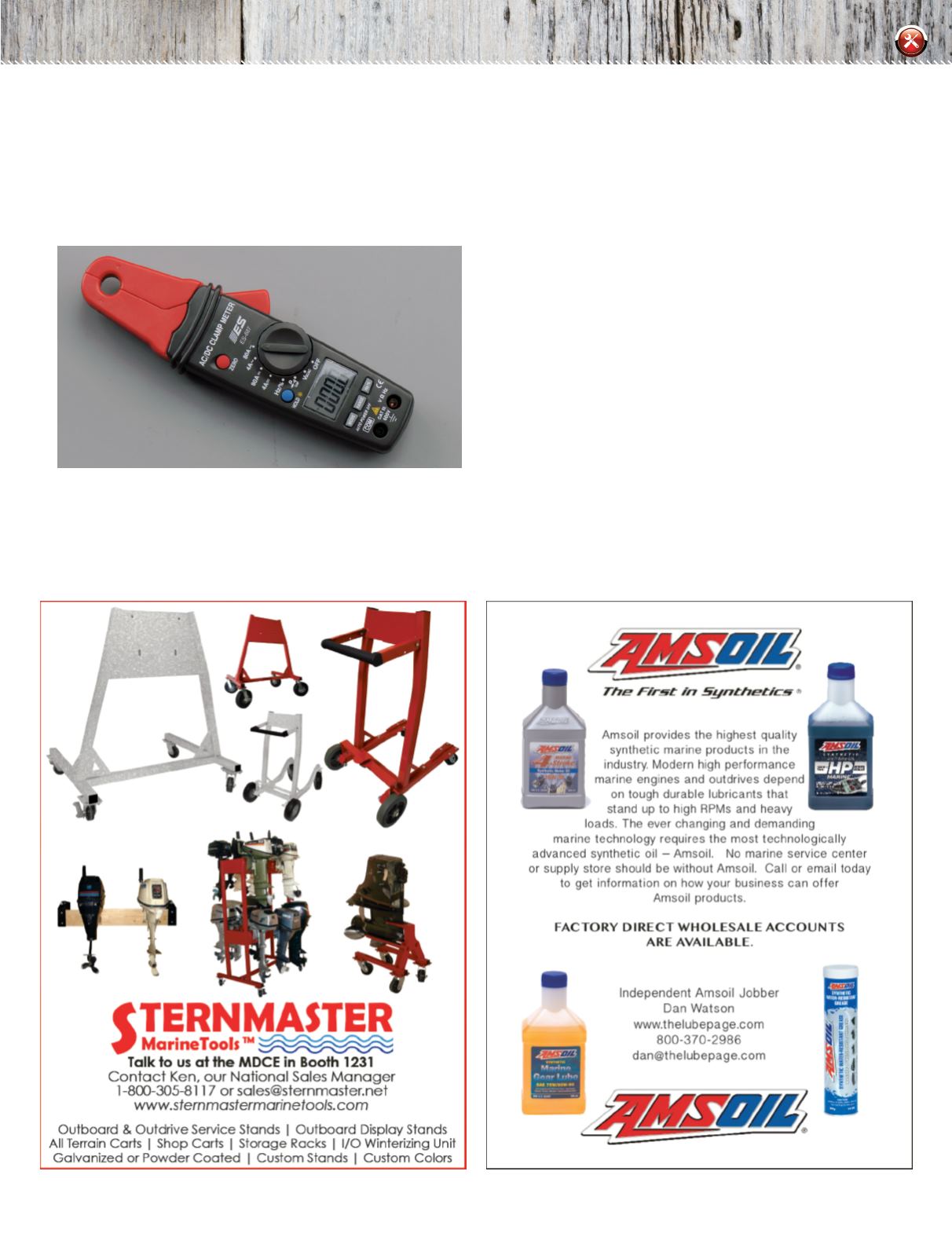
FALL 2014 | MARINE TECHNICIAN TODAY
9
to reach down to recessed screws easily, plus they are invaluable for
carburetor repair. Replace the blades when screwdriver tips start to wear
to save your knuckles and to prevent component damage when they slip
off the screw head. Professional tool companies replace worn blades at
no cost as long as they were not used as chisels or prybars.
Because of the humid environment around boats, electrical problems
are possibly the most common service complaint, especially in saltwater
areas. Instead of carrying several different meters I have found that a
clamp-on current probe with a built-in multi-meter to be the handiest tool
of all. Charging problems on both outboards and inboards along with
blown fuse situations call for an ammeter, an ohmmeter, and a voltmeter
to find the culprit. Having a tool that functions as all three saves time
and effort when troubleshooting. Current readings are simplified by just
clamping the jaws over a wire and observing the amperage displayed
on the screen. Use the included test leads for the other circuit test
procedures. The ESI #687 DMM/Amp Probe is my “go-to” meter for
almost every electrical situation in a boat.
The above tools and tips came from learning many things the hard way,
from trying new items as they came on the market, and from the lessons
from those memorable old characters who took me under their wing
so many years ago. I hope that every one of you in the repair business
benefits at least a little bit from this article and will someday pass your
wisdom and experiences down to others.
TODAY’S TECHNICIAN
.


